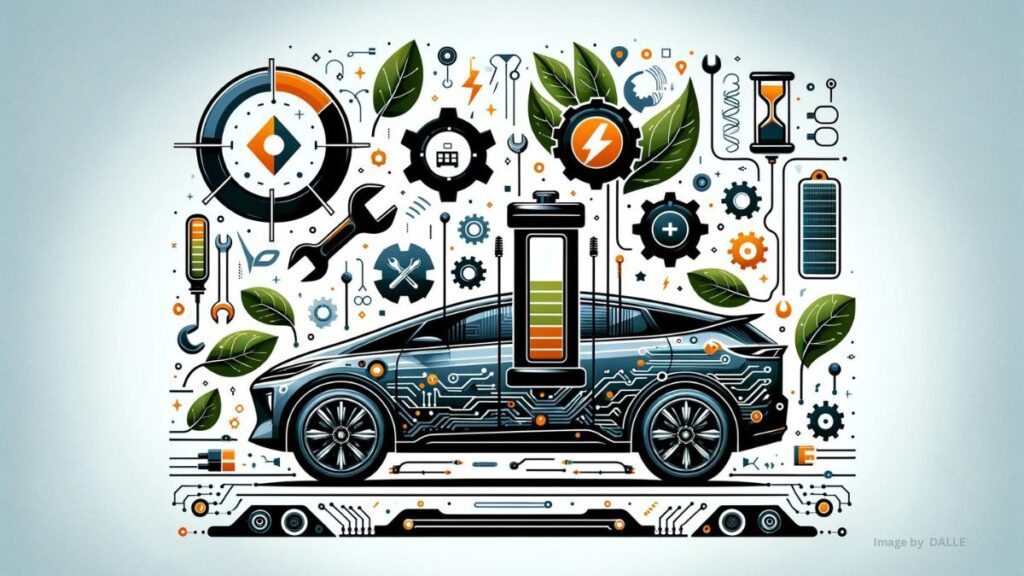Electric vehicles (EVs) are becoming more popular and affordable, thanks to their environmental benefits, lower operating costs, and technological advancements. However, one of the main concerns for EV owners and potential buyers is the battery life. How long will the battery last? How can you preserve its capacity and performance? How much will it cost to replace it?
In this article, we will answer these questions and provide you with some practical tips on how to maintain and extend the life of your electric vehicle battery. We will also explain how EV batteries work, what factors affect their degradation, and what warranties and incentives are available for EV owners.

How EV Batteries Work
Most modern EVs use lithium-ion batteries, which are similar to the ones in your smartphone or laptop. These batteries are composed of hundreds or thousands of individual cells, which are grouped into modules and then into a battery pack. Each cell has two electrodes (anode and cathode) separated by a liquid electrolyte and a plastic separator. When the battery is charged, lithium ions move from the cathode to the anode, and when the battery is discharged, they move in the opposite direction. The movement of ions creates an electric current that powers the electric motor and other systems of the EV.
Lithium-ion batteries have several advantages over other types of batteries, such as lead-acid or nickel-metal hydride. They have a higher energy density, which means they can store more energy in a smaller and lighter package. They also have a lower self-discharge rate, which means they lose less energy when not in use. They do not suffer from memory effect, which means they do not need to be fully discharged and recharged to maintain their capacity. And they have a longer cycle life, which means they can withstand more charge and discharge cycles before losing significant capacity.
However, lithium-ion batteries are not perfect. They are expensive to produce and contain scarce and harmful materials, such as cobalt and nickel, which pose environmental and social challenges. They are also sensitive to temperature, voltage, and current, which can affect their performance and lifespan. And they degrade over time, which means they lose some of their capacity and power as they age.
IMPORTANT LINKS
- How to Trade in Your Old Gas-Powered Vehicle for an Electric Vehicle with the BC Scrap-It Program
- How to Get a Tax Write-Off for Your Business with the Federal Tax Incentive for Electric Vehicles
- How to Save Money with the Federal iZEV Program for Electric Vehicles
- How to Find the Best Electric Vehicle Charging or Hydrogen Refuelling Station Near You
- How to Buy or Lease a Heavy-Duty Electric Vehicle with the Federal iMHZEV Program
How Long Do EV Batteries Last?
The lifespan of an EV battery depends on many factors, such as the battery chemistry, design, quality, usage, and maintenance. There is no definitive answer to how long an EV battery will last, as different models and brands may have different specifications and warranties. However, according to current industry expectations, EV batteries are projected to last between 100,000 and 200,000 miles, or about 15 to 20 years. However, even when EV batteries do age, their large initial capacity combined with minor losses in battery capacity means the aging is nearly imperceptible to drivers.
Most EV manufacturers offer a standard warranty of eight years or 100,000 miles for the battery pack, which covers any defects or excessive degradation. Some manufacturers may offer longer or more comprehensive warranties, depending on the model and market. For example, Tesla offers an eight-year warranty with unlimited mileage for the Model S and Model X, and a minimum 70% retention of battery capacity. Hyundai offers a lifetime warranty for the Kona Electric and the Ioniq Electric, which covers any battery failure or capacity loss below 70%. Nissan offers a battery capacity warranty of eight years or 100,000 miles for the Leaf, which covers any capacity loss below nine bars out of 12 on the dashboard gauge.
In addition to the manufacturer’s warranty, some countries and states may offer incentives or regulations to encourage the adoption and longevity of EV batteries. For example, in the US, the federal government requires that EV batteries meet a minimum performance standard of 70% of their original capacity after 10 years or 150,000 miles. In California, EV batteries must meet a minimum performance standard of 80% of their original capacity after 10 years or 150,000 miles. In Europe, the European Commission is developing a proposal for a battery regulation that would set minimum requirements for the durability, performance, and recyclability of EV batteries.
How to Preserve Your Electric Vehicle Battery Capacity and Performance
While EV batteries are designed to last for a long time, there are some best practices and tips that you can follow to preserve their capacity and performance. Here are some of them:
- Keep the battery between 20% and 80% charged at all times. This is the optimal range for the battery health, as it avoids the stress and damage caused by extreme charging or discharging. Only charge your car to 100% when absolutely necessary, such as for longer trips or emergencies. And never let the battery go below 20%, as this can cause irreversible damage to the cells.
- Minimize exposure to extreme temperatures. High or low temperatures can negatively affect the battery performance and lifespan, as they can cause the electrolyte to evaporate, the internal resistance to increase, and the chemical reactions to accelerate or slow down. Try to park your car in a shaded or covered area, use a thermal management system if available, and pre-condition the cabin and the battery before driving or charging.
- Allow the battery to cool down before recharging. Charging a hot battery can cause overheating and thermal runaway, which can damage the cells and reduce the capacity. If you have been driving or charging your car in a hot environment, wait for the battery to cool down before plugging it in again. You can check the battery temperature on the dashboard or the app, and avoid charging if it is above 40 degrees Celsius (104 degrees Fahrenheit).
- Limit your use of rapid chargers. Rapid chargers, also known as fast or superchargers, can refill your battery in a fraction of the time compared to normal chargers. However, they can also cause more stress and heat to the battery, which can degrade it faster. Use rapid chargers only when necessary, such as for long-distance trips or emergencies, and avoid charging to 100% or staying plugged in longer than needed. Prefer normal or slow chargers for your regular or overnight charging, as they are gentler and cheaper for the battery.
- Don’t leave your car fully charged for long periods. Keeping your battery at a high state of charge for a long time can cause parasitic reactions that can reduce the capacity and increase the degradation. If you are not planning to drive your car for a while, such as for a vacation or a lockdown, leave the battery at around 50% and disconnect it from the charger. You can also use a timer or a smart charger to schedule your charging sessions and avoid overcharging.
- Stick to your car’s indicated service and maintenance schedule. Regularly servicing and maintaining your car can help you detect and prevent any potential issues with the battery or other components. Follow the manufacturer’s recommendations and guidelines for the service intervals and procedures, and check the battery health and performance regularly. You can also use a diagnostic tool or an app to monitor the battery status and get alerts or tips for optimal charging and driving.
Conclusion
EV batteries are one of the most important and expensive parts of an electric vehicle, and they can affect the driving range, performance, and lifespan of your car. Therefore, it is essential to maintain and extend the life of your electric vehicle battery, by following some best practices and tips, such as avoiding extreme temperatures, charging at optimal levels, and using regenerative braking. By doing so, you can enjoy the benefits of driving an EV, save money on fuel and maintenance, and contribute to a cleaner and greener future.
Source: (1) Electric Car Maintenance: Everything You Need to Know – Car and Driver. https://www.caranddriver.com/shopping-advice/a40957766/electric-car-maintenance/. (2) How to Perform Basic Maintenance on an EV (Electric Vehicle) – MotorTrend. https://www.motortrend.com/features/how-to-maintain-a-battery-electric-vehicle-ev-details/. (3) EV Battery Maintenance Best Practices | GreenCars. https://www.greencars.com/greencars-101/ev-battery-maintenance-best-practices. (4) The Ultimate Guide to EV Battery Maintenance and Repair – Cars of Electric. https://carsofelectric.com/can-electric-vehicle-battery-be-repaired/. (5) Servicing Your Electric Car 2024 | Electric Car Guide. https://electriccarguide.co.uk/ev-owners-guide-to-servicing-your-electric-car/.









